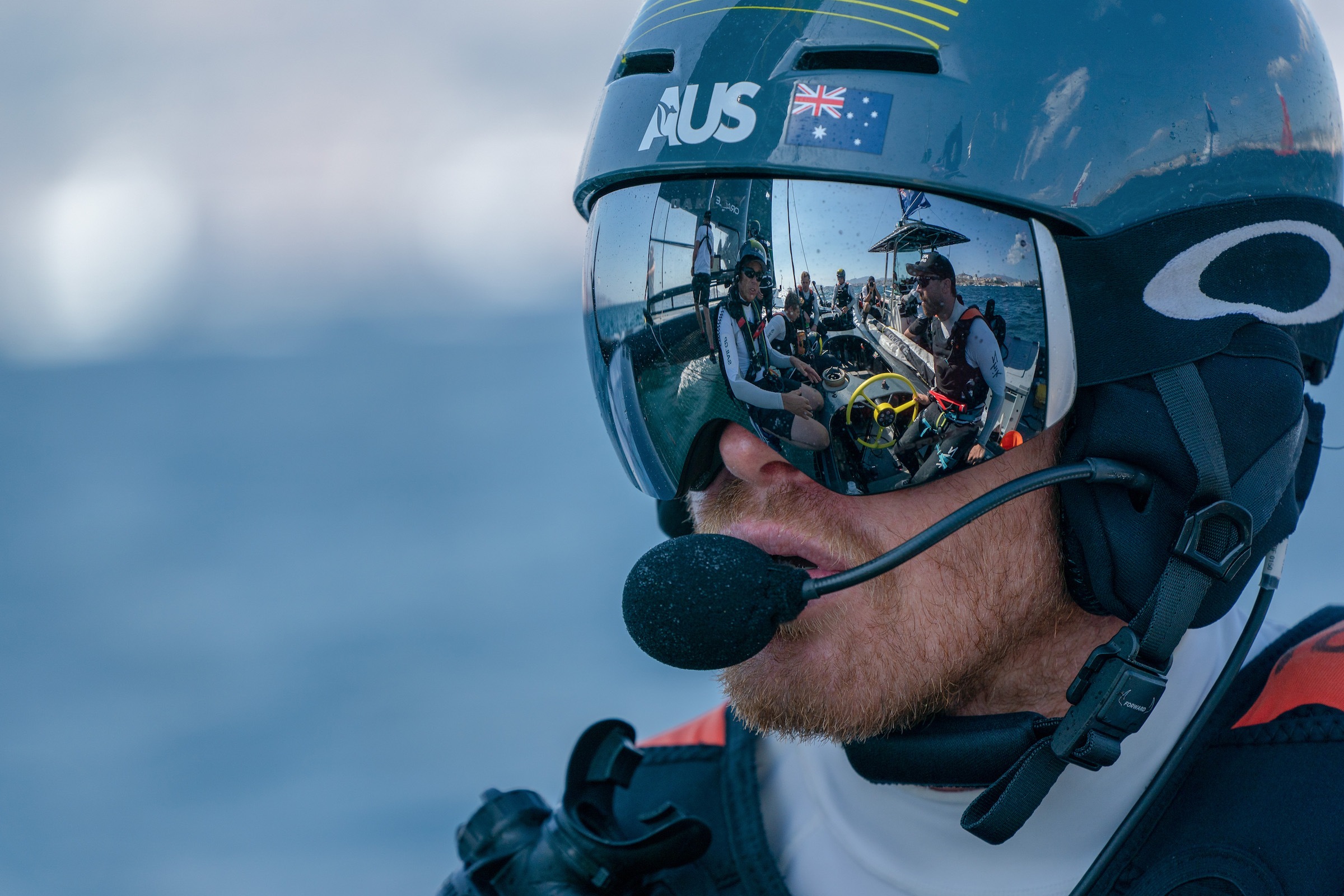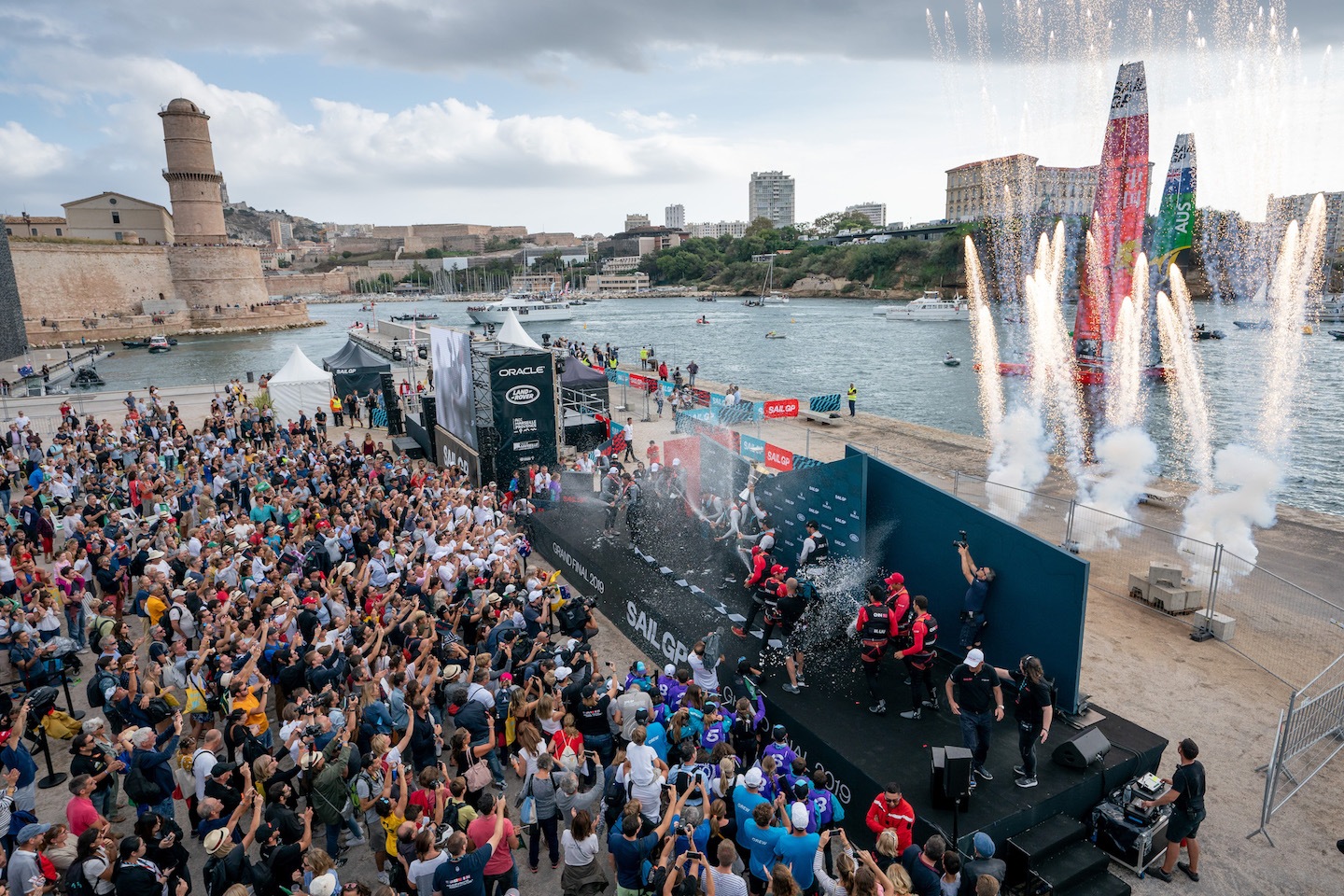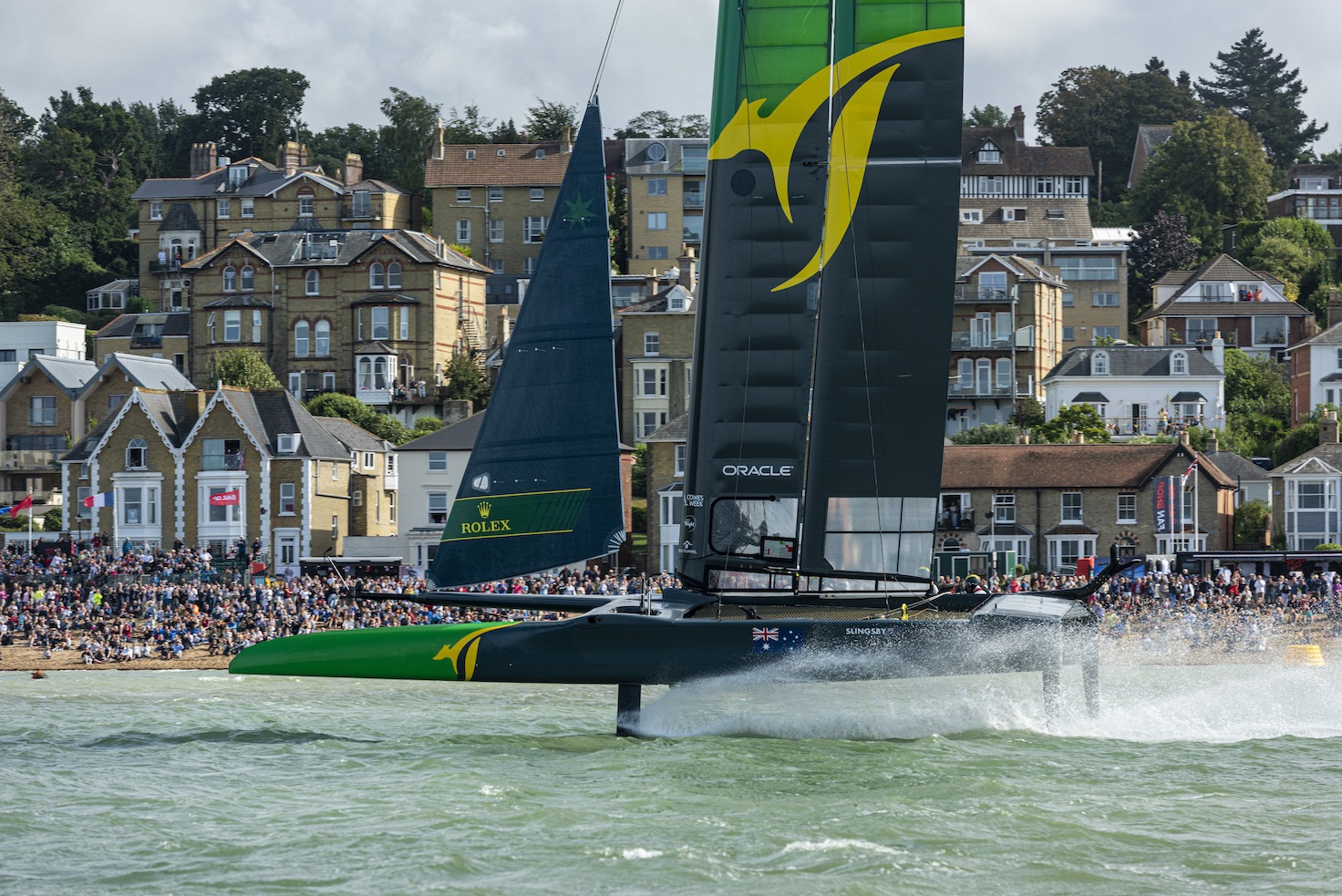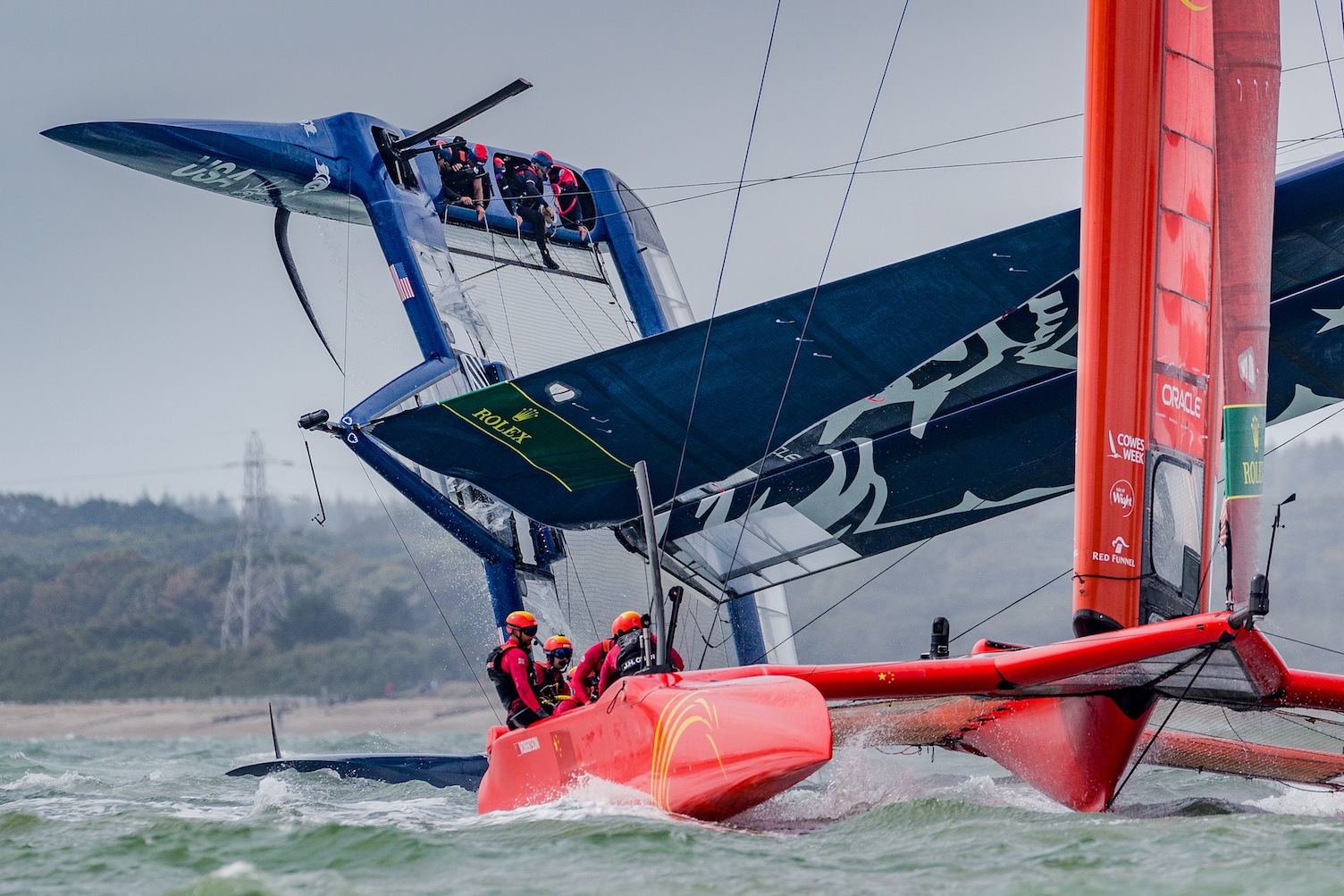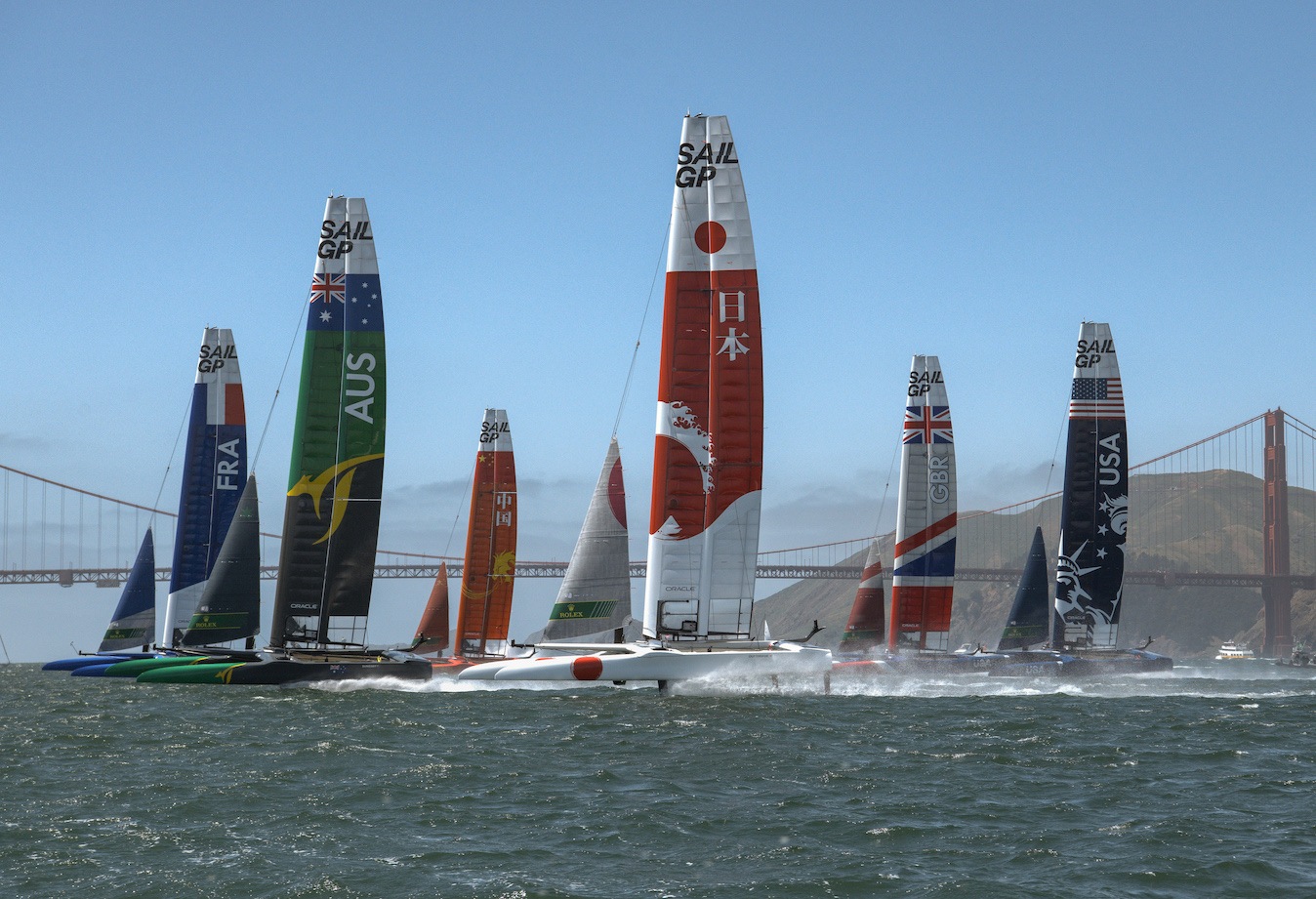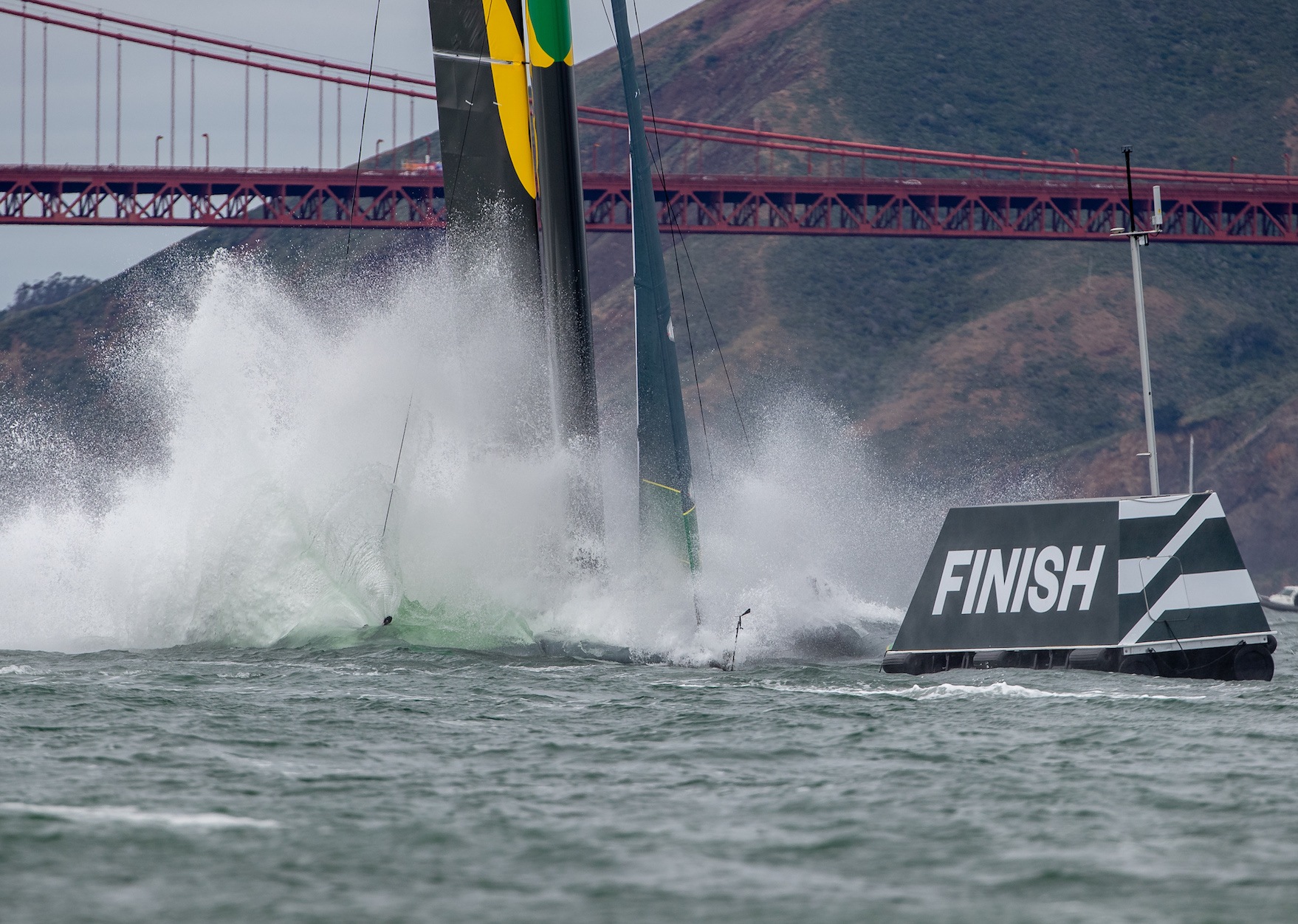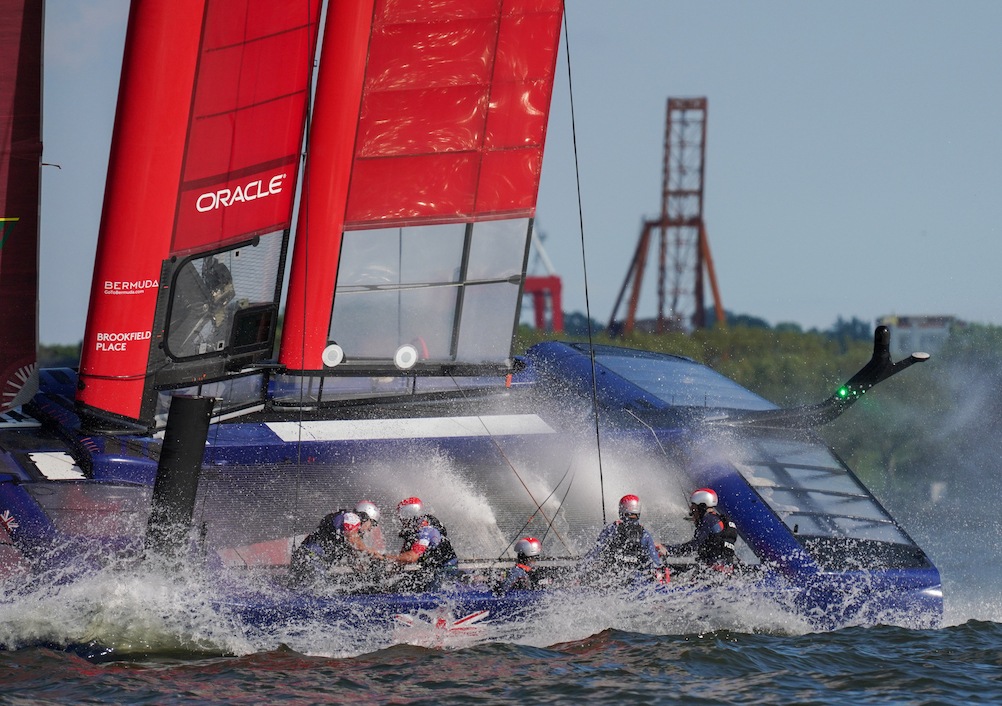Skill, determination, discipline
Tom Slingsby on SailGP: changing the face of the sport.
Written by Scott Alle
Photography by SailGP
05 December 2019
Advertisement
Tom, congratulations on a great year. Is it more satisfying to you to have achieved this with a team? Because a lot of your high-performance sailing has been solo.
For sure. I mean, it’s really hard to compare sort of the solo stuff to the America’s Cup stuff, Olympic competition and all that, but for sure competing and representing Australia in a full Australian team in a country versus country competition. Yeah, I mean, way more than the prize money was the fact that we just wanted Australia to be known as the best country in the sport and that’s what we were competing for and yeah, we were stoked just to win and get Australia on top.
What about immediately after that when you’d won it? What was the look? What was said to each other?
Well it was all a bit of madness out there. We couldn’t find the top marks and the spectator boats, then we’re half hearing the race committee saying they were looking at moving the finish line and is there another lap and we were all a bit mad and we spotted what I thought was the finish and I said, “Okay, that’s our line, let’s go.” And we tacked through the finish and you’ll see my face I think I say, “Is that it?” and then when we heard the horn go and everything. And then it was just elation because there’s so much pressure.
Advertisement
I mean, for me it’s the first time I’ve had any financial pressure on me, I guess. I mean, there’s huge pressure at the Olympics to win a gold medal and the glory is what we’ve always competed for. But I guess, a million dollars in an eight-minute race and I was just trying not to be the reason why people of my team’s family don’t get a holiday over Christmas this year. I was trying to not to be that reason and so I just didn’t want to make a mistake personally. And then being behind the whole race and finishing and looking around and seeing that we got it, it was a pretty surreal moment. It just happened so fast. And we’re behind the whole race and we’re saying, ‘We’re still in it, stay close and they’ll make a mistake’. And the way it happened and then it was a quick two-minute beat to the finish and yeah, it was pretty awesome.
I read Mike Drummond [SailGP Teachnical Director], attempting to explain what it’s like to actually steer the F-50. He said it’s like balancing a broomstick on your finger, except this broomstick on your finger is only a few inches long and there’s another full-length broomstick on top of it. What is the margin of error? It must be very slight.
It’s getting used to sailing more of a 3D platform. You’ve got your ride height up and down, so your vertical height. You’ve got your heel, windward, leeward and then you’ve got your pitch moment. In traditional sailing you’re used to your heel, controlling that. Not so much your pitch moment, that’s usually done by the design of your yacht and obviously no vertical fly height. So, you really need your senses working for you.
Like if for example, if Kyle Langford’s trying to get the windward heel right, he wants one to two degrees of windward heel. So, he’s using the wing sheet trying to get that exact amount but if Jason Waterhouse comes down a little bit low on his ride height, he takes away Kyle … The windward hull touches because Kyle’s got two degrees and then it can be me complaining to Kyle, ‘You’ve got too much windward heel.’ And then he says, ‘Well no Jason’s flying too low’. And it’s just the communication. And then they might yell at me for not getting the pitch of the boat right where the amount of rudder lift.
So, it’s the communication between our whole team to get the whole package right and get the boat performing. It’s a new challenge for all of us and its exciting and the levels just going up and up. Yeah, we just want to race against the best and be proven and beat these guys on the water.
So, those little adjustments that you’re talking about, is it that much or is it that-
It’s tiny.
It’s just that much on the grip or something like that?
Yep, it’s the way we move the ride height with the controls. It’s tiny movements with your fingertips. With me, if I get the rudders point one or point two of a degree out, the guys are yelling at me that the rudders aren’t right, that we don’t have the trim of the boat right. And if Kyle gets one degree too much heel, the hull touches down and I’m yelling at Kyle saying, ‘C’mon let’s get it going’.
But we work so well together as a team. There are no egos, we’re not trying to have a go at the other guy. We all are just trying to get the best out of the boat.
And if I say, ‘C’mon Kyle let’s go,’ he doesn’t take it in a bad way that I’m having a go at him. He’s like, ‘Yep, yep. Nah, I’m on it.’ And if he yells at me, ‘C’mon Tom, press. We’re sailing too high and slow,’ in no way do I take that as negative feedback. It’s like, he’s on the ball and I’m not. I’ve drifted off. So, he’s just getting me back on. So yeah, as a team we work really well and these adjustments are just so fine that sometimes you just need your team members to help you and just say, ‘C’mon we need to change something to get 100 percent out of the boat.’
Is this by far the most technical sailing that you’ve done, the F-50?
Yeah, for sure. I mean, I guess it’s a bit different to the America’s Cup when we were developing this type of boat. We’re designing new parts and light, stiffer, stronger in the America’s cup. So, every day you’ve got new parts that might be a hydraulic cylinder and you’re deciding does it move fast enough, is it strong enough, is it going to break, all these other factors are coming.
But for technically sailing the boat, we’ve all got one designed boat, so we know … In the America’s cup you don’t know are they going quicker than you and you have to, you’re sitting there permanently guessing. You can assume that its something, some part on their boat is working better. But with us, we know that its our sailing ability and we know that we can make adjustments and catch them. And for me, that’s great. I always want it to be settled on the water.
It’s a much more level playing field?
It’s a level playing field and you know that it’s the skill of your teams sailing, not a piece of equipment on your boat. I love the America’s Cup and I do love the design and all that but more than that, I love competitive racing and knowing that your sailing team is going to match up evenly with another one.
Now, also really interesting is you are right on the boundary of technology with the issues of cavitation when you’re foiling. How much faster do you think you can go in this format realistically before you get all those physical limits that start to come in?
Yeah, I mean, we’re just hitting cavitation obviously. But having said that, the fastest we’ve gone was 51.24 knots and I felt completely in control. I didn’t feel like the boat was losing lift. I didn’t feel like it was out of control at all. It was comfortable steering. Jason Waterhouse was comfortable riding the height. In the America’s Cup last time our boards hit full cavitation at 45 knots. And they would lose lift immediately and you would immediately nosedive and crash.
With these ones?
With these foils have a slow onset of cavitation. So, slowly the air the water boils under the foil of the hull and so you very slowly lose lift and you keep control through cavitation. So, I think that we can go faster than that speed, for sure.
I think we can, depending on how we tweak the boat and limit adjust parameters, I think we can be sailing downwind sitting on 50 knots. And I think a top speed, with this foil package is probably possible 53-54 knots.
I think that’s when you would hit issues with control and not be able to go any quicker.
What about the improvements for the F-50’s next year. I know there’s the new jib arrangement. The idea is that you’ll be up foiling what 4 knots of breeze or something like that?
Yeah, the new wings. In all honesty I’ve heard that there could be delays in those. I think the plan is to get the little wing out first so we can sail in more wind, so the theory is up to 30 knots. It’s all wave dependant. Yeah, and then the big wings might not make it for next season. That’s what I’ve heard, I don’t know yet.
What that will do of course is give you the ability to cross a greater wind range, right?
Yeah. So, obviously we’re trying to improve SailGP, make it better and then one of the things we obviously deal with is weather conditions, and not enough wind, too much wind. So, we just want to increase that range at the moment. We can foil in about five knots maybe six, and I think we’re a bit limited in maybe 23-24 knots. The plan is to go from three knots to 30 knots. So, we have an 18-metre wing, for sort of your 17-30. And a 24-metre wing, which is what we have now the standard which is sort of from your seven-17. And then light wind from sort of three-seven.
I’ve noticed you’ve been out on the harbour training on a (foiling) Moth. Just for relaxation? Where does the drive comes from? Is it to be the best or is it to be the best and to master that skill?
Sometimes ill set a goal like winning The Moth worlds. But that all works itself out. I had someone ask me to see my gold medal the other day. I hadn’t even looked at it in years and years. I don’t look at my results. I’ll look at that when I’m retired, and I don’t sort of match that up.
Do you know where it is?
Yeah. I do. It’s in my sock drawer. I got asked to bring it out for a talk the other day and I had to look around a bit for it. But yeah, I’m going to look back on my career in the future and that’s … and I’m not done yet and when mi finished ill look back and see what I’ve achieved and hopefully be proud. But at the moment just head down and I want to learn as much as I can, and I want to be a better sailor at the end of today than I was at the start every day. And I just love that. I love breaking it down into a day by day thing.
Read the full interview in the latest issue of Sails Magazine, out now!
Advertisement
Advertisement
Advertisement


